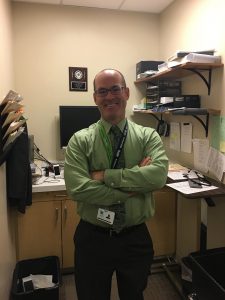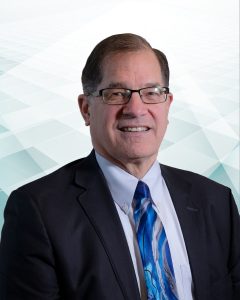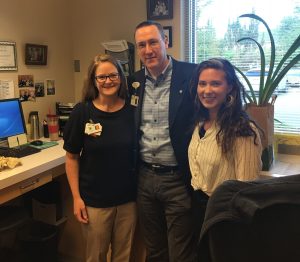When patients are referred to Olympia Orthopaedic Associates (OOA), they often have one pressing concern: Are you going to operate on my back? Such anxiety is understandable given the complex nature of spinal surgery, but according to the OAA spinal care doctors involved, it’s mostly unfounded.

“I think a lot of people are worried when they come in to see a surgeon that the only thing we’re going to offer them is an operation,” says Neurosurgeon Dr. Ryan Halpin. “Usually, that’s the last thing we’ll do.”
The team at OOA takes a collaborative approach to back and neck issues, one which includes physical therapists, pain management experts, and their sports medicine unit. “We have a Physical Medicine Rehabilitation Specialist,” says Dr. Clyde Carpenter. “He not only evaluates patients, he gets them through rehab, maybe does some injections and can evaluate their nerves with electrodiagnostic studies. Then we have another specialist who deals with pain management, so we’ll know if the patient is a better candidate for that than surgery.”
The team also works with doctors, both within their office and among other providers in the community, who specialize in the non-operative treatment of spinal conditions, as well as local chiropractors and massage therapists.
Once the original diagnosis is complete, the next step is patient education, which is also a collaborative process. “We don’t force anyone to do anything they don’t want to do,” says Halpin. “We want to make sure you understand what your condition is and how we can make it better.”

Conditions range from simple muscle strains to deformities of the spine and other more serious issues. “Very common things I see are lumbar or cervical muscle strains,” says Halpin. “Those can be quite painful and quite debilitating. While the pain can be severe, it’s a benign disease and it will usually get better.” Some of his other patients have degenerative arthritis without neurological symptoms, and many are treated non-surgically.
Dr. Andrew Manista works with patients who have problems related to a deformity of the spine or bones that have been moved out of alignment. Others may have pain in their necks and arms due to issues with discs. “Patients come to OOA’s spine program for many reasons,” he says. “Most frequently these include deformities, problems with discs causing nerve pain, or need for revision surgery. With our spine team’s expertise in robotics, nerve decompression, and correcting deformities we are able to help.”
Sometimes, however, the solution is a few minor lifestyle changes. “Simply learning about what’s happening with them allows people to make a few changes,” says Manista, “whether that’s a different type of exercise routine or a way they can avoid certain activities.”
Patients usually visit the office with one of two complaints: they’re in considerable pain or they’re noticing a deformity or change in their body. “Some notice that their spine is changing, they’re losing height or they’re hunching over,” says Carpenter, “Or they’ve had an injury where they’re in pain. My first job is educating them about what’s going wrong.”

Among patients who do require surgery, certain factors contribute to a successful outcome – or its opposite. Carpenter conducted a long-term study that followed patients for seven years after they’d had spinal fusions. He found that three groups of people, statistically speaking, tended to be among the 10 percent who said their condition was the same as it had been prior to surgery or worse. They were smokers, those who chronically used narcotics such as oxycodone, and people who were receiving worker’s compensation due to their injury.
“If they can stop smoking and stop the narcotics before their surgery, they can do almost as well as everybody else,” says Carpenter. “The other 90 percent had good or excellent outcomes.”
One case that stands out in his mind was a 25-year-old man suffering from a hunchback. Due to his condition, he couldn’t work and dealt with chronic pain. To correct the problem, Carpenter placed rods and screws up and down the spine, videotaping the process. “I told him I’d like to record it because we were using a robot,” he says. “He did great. After three months he said, ‘I’m ready to get back to work.’”
Video
Drs. Carpenter and Halpin perform scoliosis correction surgery with robotic assistance to help improve a patient’s function. Watch it here.
Halpin recalls another patient who couldn’t do any normal activities of daily living due to extreme back pain. “Through an operation, she is doing well and running marathons,” he says. “She sends us pictures.”
For anyone suffering from back or neck pain, he encourages them to visit the clinic. “We take all comers here,” Halpin says. “You don’t have to be dragging and crawling to come in. If you have a problem, we can figure out how to help you.”
Learn more, by visiting the Olympia Orthopaedics Associates website or calling 360.709.6230.
Sponsored











































